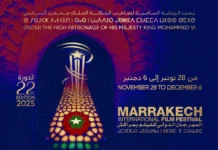In a world undergoing rapid and often disorienting change, museums are stepping into an increasingly vital role—not just as guardians of the past, but as dynamic spaces where stories, ideas, and cultures converge. As societies redefine themselves, these institutions are evolving too, engaging with the present while honoring the weight of history.
This transformation is especially resonant on May 18, as the world marks International Museum Day. With this year’s theme, “The Future of Museums: Shaping Communities in Transition,” the spotlight turns to how museums can serve as anchors and catalysts amid sweeping social, cultural, and technological shifts.
Across the globe, institutions are reimagining what it means to be a museum in the 21st century. No longer content with simply preserving artifacts behind glass, they are actively seeking to engage with the communities around them. This means tackling contemporary issues—promoting inclusivity, expanding access to culture, and shedding light on often-overlooked heritage. The embrace of digital tools has become part of this movement toward openness, though the physical experience of seeing and interacting with objects remains central.
In Morocco, this shift is unfolding alongside a broader cultural renaissance. The country Morocco’s museums embrace innovation and inclusionThis growing network reflects a commitment to decentralizing culture and celebrating the richness of local identities.
Among Morocco’s flagship institutions is the Mohammed VI Museum of Modern and Contemporary Art in Rabat. Since opening in 2014, it has become the country’s leading public space dedicated exclusively to modern and contemporary art. Housing over 400 works by Moroccan artists, the museum traces the arc of national artistic expression from the early 20th century to today.
In Marrakech, the Aman Museum—formally known as the Mohammed VI Museum for the Civilization of Water—opened its doors in 2017 with a unique mission. Spanning more than 2,200 square meters, it immerses visitors in Morocco’s hydraulic heritage, from ancient irrigation systems to current challenges surrounding water sustainability. In its first year, the museum attracted nearly 37,500 visitors.
Also in Marrakech, the Yves Saint Laurent Museum, situated near the iconic Jardin Majorelle, honors the life and legacy of the legendary French designer. Opened in 2017 and designed by the architectural firm Studio KO, the museum features an array of garments, accessories, and sketches, highlighting how deeply Moroccan culture influenced Saint Laurent’s work.
Meanwhile, the Dar Si Saïd Museum—set in a 19th-century palace in the same city—focuses on Moroccan craftsmanship. Its extensive collection of carpets, woodwork, jewelry, and everyday artifacts showcases the cultural diversity of southern Morocco and its deep artisanal traditions.
Further north in Tangier, the Kasbah Museum of Mediterranean Cultures occupies the former Sultan’s palace, Dar El Makhzen. Its archaeological and ethnographic displays chart the rich cultural interactions that have shaped the Mediterranean world for centuries.
This drive to build, renovate, and reinvent museums is more than a matter of infrastructure—it’s a conscious effort to make heritage accessible and relevant to a wider audience. By targeting younger generations, these institutions aim to foster curiosity, civic pride, and a sense of shared identity.
Education and engagement are now at the heart of the museum experience. Through guided tours, hands-on workshops, and interactive exhibits, museums are becoming active players in the social fabric. They no longer just inform; they invite visitors to claim ownership of their cultural narratives.
Digital innovation enhances this mission without replacing the tangible. Augmented reality, immersive installations, and online platforms are extending the museum experience beyond its walls, making collections more approachable and meaningful in a world increasingly shaped by technology.
First launched in 1977 by the International Council of Museums, International Museum Day serves as an annual reminder that museums are not frozen in time. They are evolving forums for exchange, reflection, and reinvention. In a world marked by uncertainty, these institutions provide both continuity and vision—bridging generations and cultures through the enduring power of memory.





